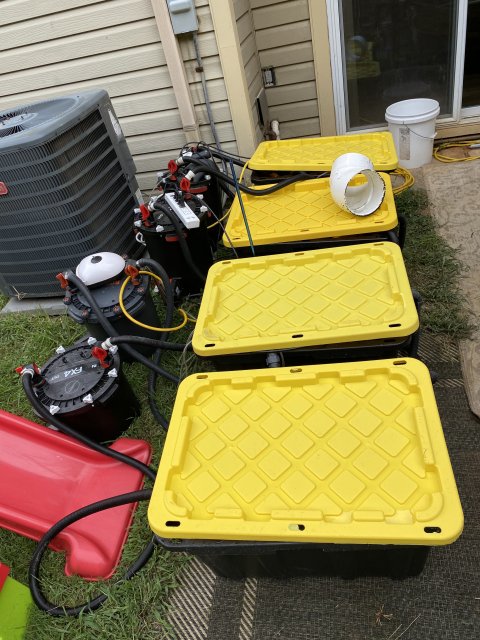There are two kinds of green phantoms, L200 and L200A, with the latter being the "hi-fin green phantom." Underscoring why we shouldn't be putting a lot of faith in the L-system, these are two completely different fish.
L200, the common green phantom, is Hemiancistrus subviridis -- and, it may very well be the same fish as L128, the blue phantom, with the colour transitionining from yellow to blue across their range. L200A is Baryancistrus demantoides. The two genera are characteristized by very different diets. Members of the genus Hemiancistrus are easy omnivores, and will graze at algae. They'll need some protein in their diet if you're going to keep them long term, and will also need supplemental foods.
Members of the genus Baryancistrus, though, are pains in the courgette. They are surface film grazers, and need constant supplies of it. They don't necessarily eat algae, but want that fine gunk that grows on stuff, so you'll need to leave things like zucchini in the tank until it starts to get funky, at which point they'll be grazing at it. They're intolerant of organic wastes, and need some current. They also need a good amount of protein in their diet (they snarf stuff like insect larvae while they're grazing), so blackworms, frozen food, and even whole shrimp are good. Again, if you leave it in the tank to get a little funky, they'll be happier. They're a tough fish to keep.
Back to the common green phantom, it's a bit more delicate, IME, than the blue phantom, but not terribly so. They're territorial, and can really be nasty with one another. One of the problems you sometimes (often) get with them is a loss of gut flora and fauna. They need bacteria to break down and digest a lot of their foods, and heavy treatment plus starvation in the supply chain really hurts them. You can help them out by putting them in a tank with a lot of plain ol' bushy noses, and a lot of pleco poop, and feeding heavily. Algae wafers, some fresh, cut zucchini, and the like. Anything ancistrus will eat.
They're from the more northern part of the blue/green phantom range, and they'll need warmer water, softer water, and lots of oxygen -- they do well with some current. You seriously want dKH under about 8, pH around 6.0, and temperature around 78-80 for these guys.
So, tldr, both green phantoms are touchy -- the blue phantom is a lot easier, though.



